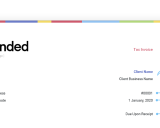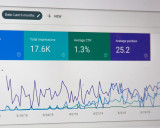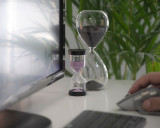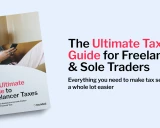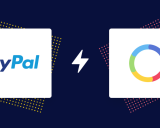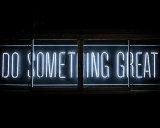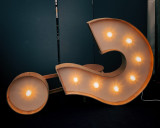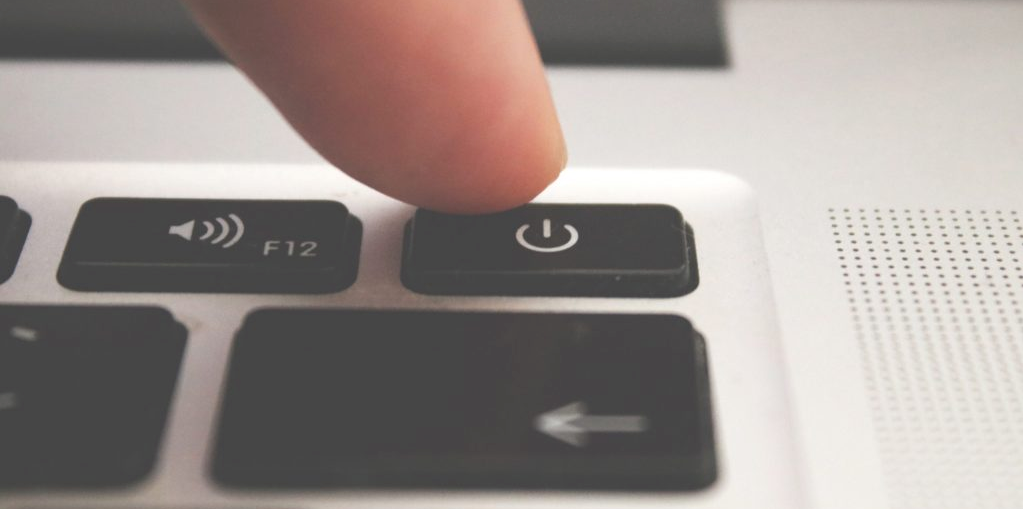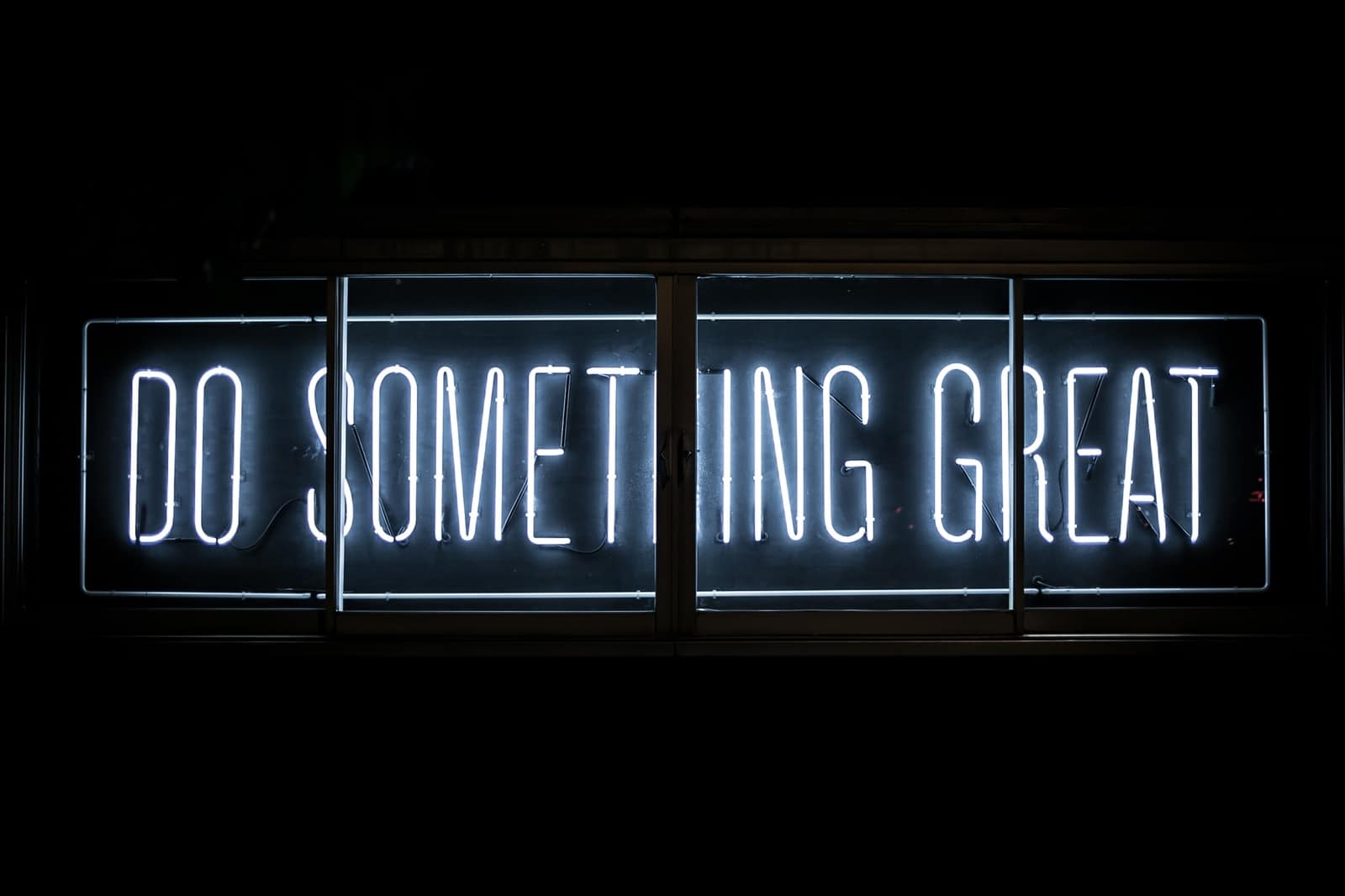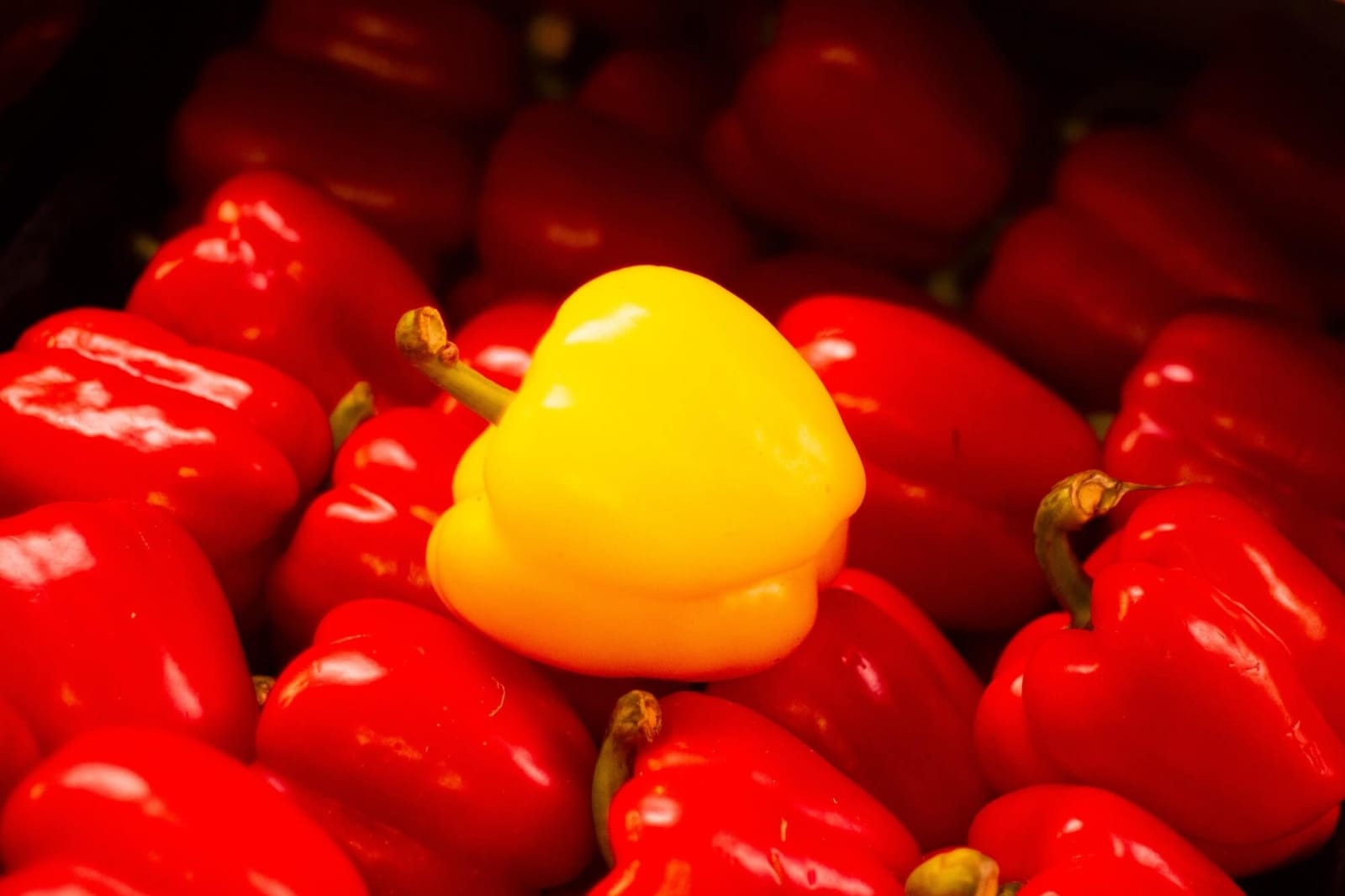
Balancing multiple passions and businesses with Aimie Whiting
In our Customer Spotlight series, we’re interviewing experienced freelancers in the Rounded community to share their stories and the lessons they’ve learned. This month, we caught up with Aimie Whiting: personal trainer, artist, and all-round creative force.
Article contents
− +- Introduction
- Aimie’s journey as a solo business owner
- New passions (and income streams)
- On learning new skills as a business owner
- Balancing multiple businesses
- Navigating the art market
- What’s next for Aimie?
- Aimie’s #1 piece of advice for business owners
- Using Rounded with multiple businesses
- See more of Aimie’s art
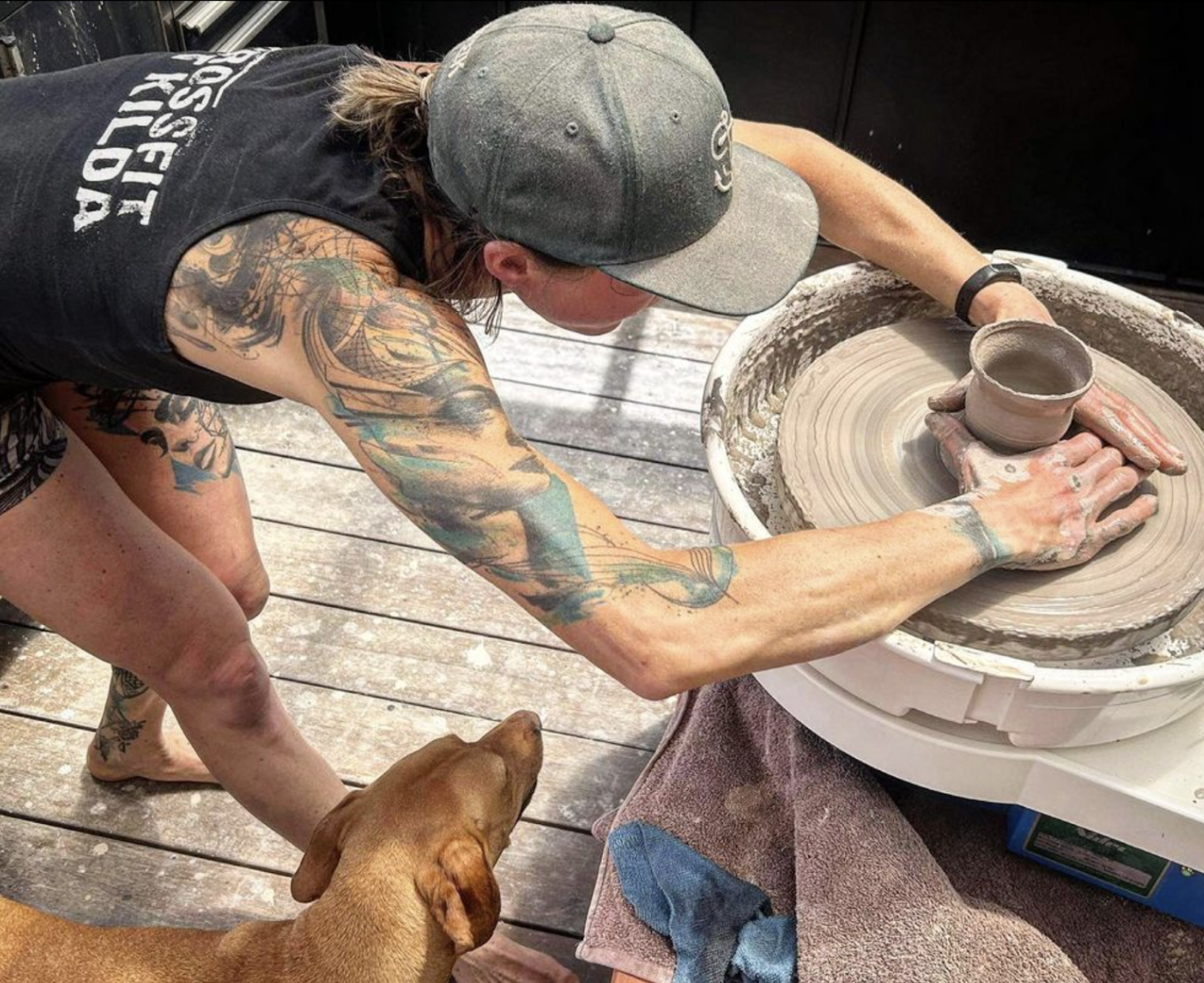
When we first spoke to Aimie five years ago, she was just starting to find the balance between her PT and metal art businesses.
Let's see how she's doing now!
Aimie’s journey as a solo business owner
Aimie's father taught her to weld at age eight, sparking a lifelong passion for transforming scrap metal into fantastic creations.
She launched her own metal art business right out of high school, then went on to study Industrial Design at Massey University in Wellington. After earning her degree, Aimie expanded her expertise by obtaining a Certificate in Personal Training from the New Zealand Institute of Sport.
Since our first interview, Aimie has worked on some incredible art pieces and now has a dedicated space in her partner's workshop.
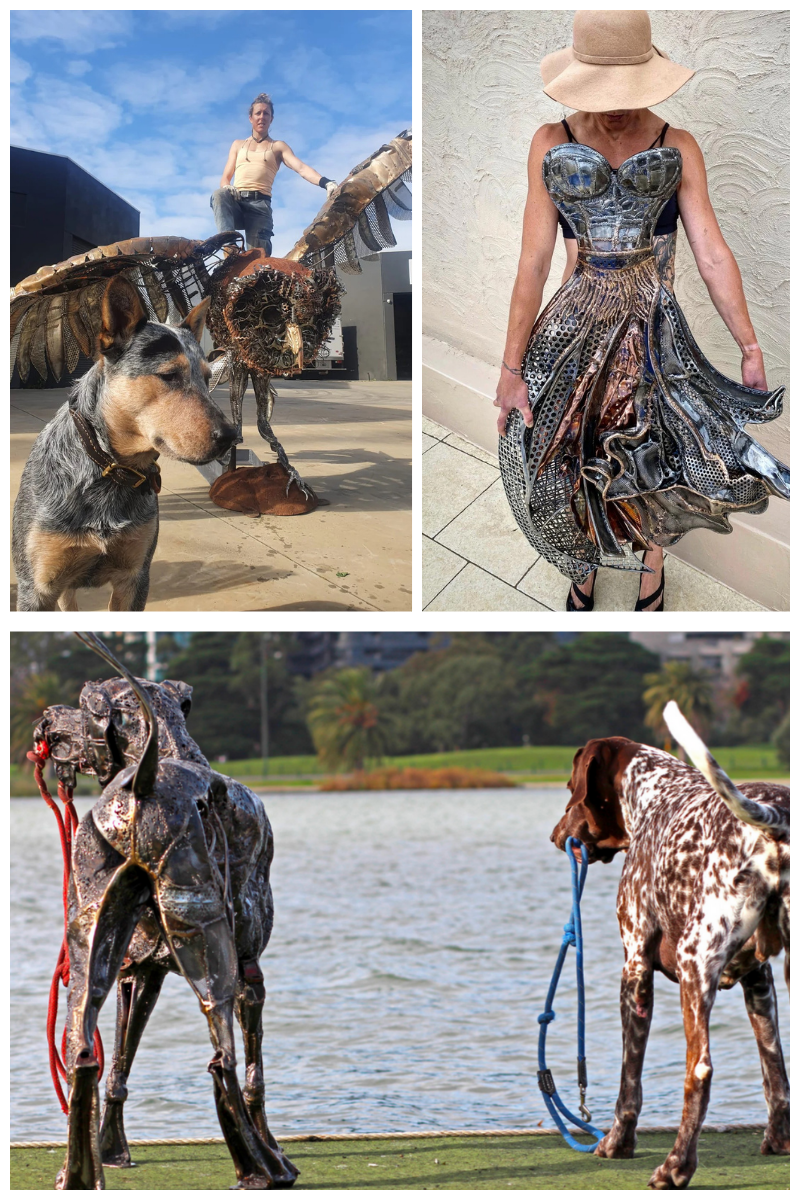
But that's not the only thing that's changed.
New passions (and income streams)
After a hip replacement in December 2023, Aimie found herself stuck at home more often.
I was on double crutches. I couldn’t walk, couldn’t sit in a car to get to my workshop, and couldn’t do my rock climbing, which was what I usually did in my free time. So I had to find something creative I could do at home
Drawing on her welding skills, Aimie transformed part of her outdoor deck into a makeshift ceramics studio. What was supposed to be a rollaway studio soon evolved into a full-fledged operation, complete with a 32-amp electric kiln.
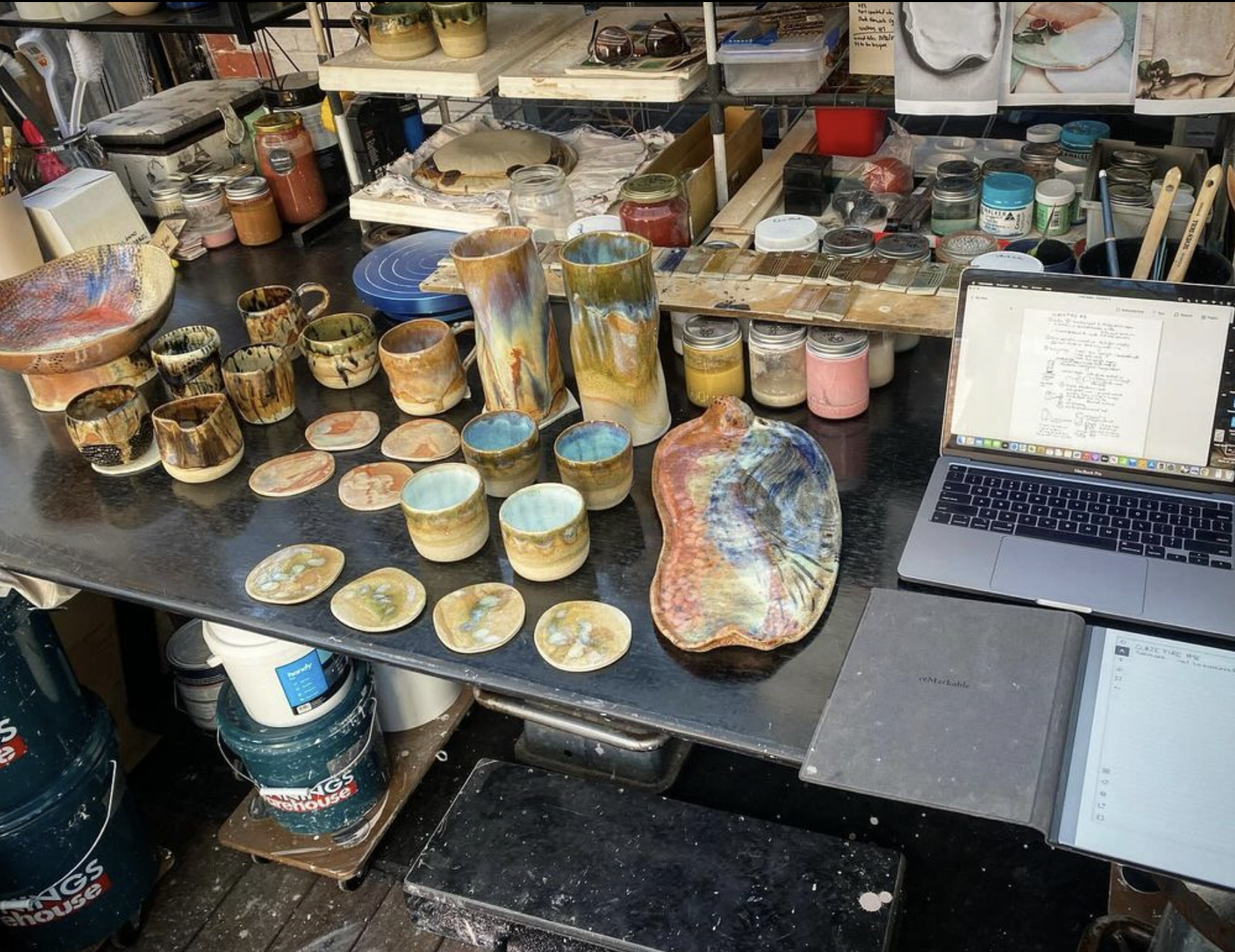
Aimie also began experimenting with tapestries during this time. Although she doesn’t work with this medium as often, it’s given her another creative outlet and income stream.
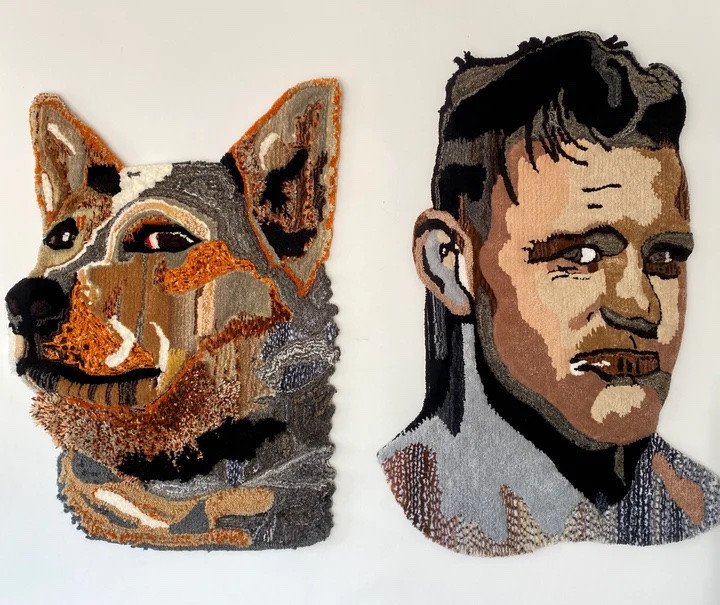
While Aimie is still early in her ceramic career, she’s found that learning this new skill has helped her push the boundaries of her creative practice.
When you put too much colour on metalwork, it looks fake. But with my latest work, I’ve achieved some really nice colours purely because of the techniques I’ve been learning with my ceramics.
Her most recent creation, Bunjil the eagle, is the first time Aimie has combined her two passions in a single piece.
The ceramic eyes just look amazing. That's the bit that’s always missing – the eyes. Steel eyes just don’t have life. Even though I’m still early in my journey, I know it will push these animal sculptures to the next level.
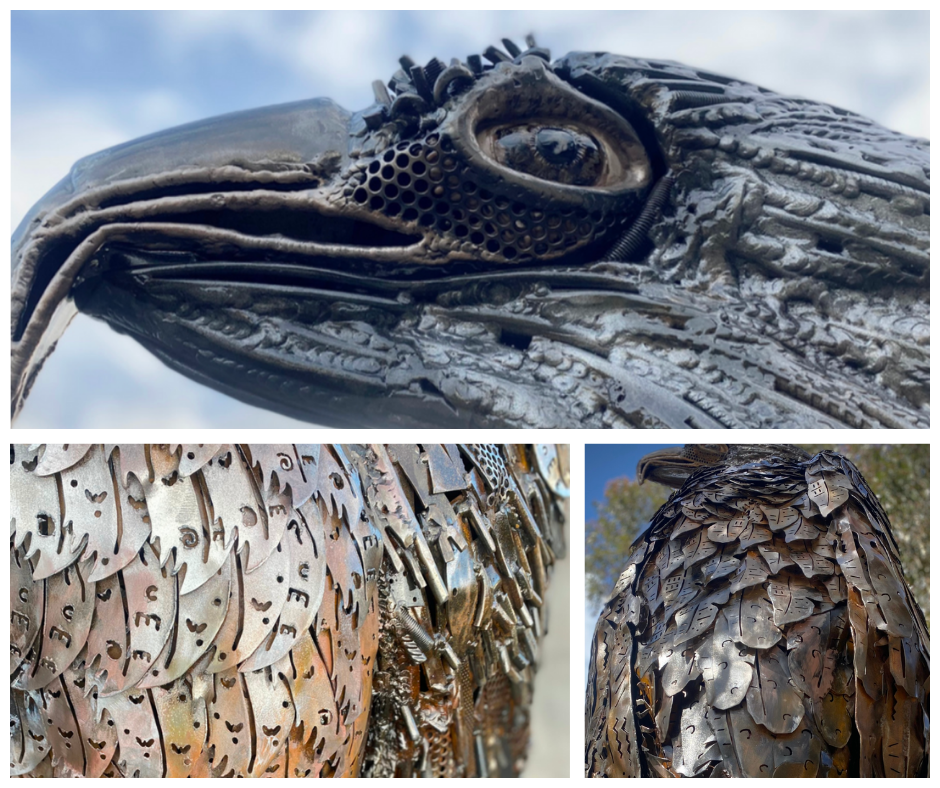
On learning new skills as a business owner
Whether it comes to working with her PT clients on a new program or her own ceramic art journey, Aimie stresses the importance of consistency when learning a new skill.
In the initial stage, if you take a break and stop practicing that skill, you’ll see a regression when you return to it.
During my recovery, I was always on my wheel making something. Then I went back to work and I’d get maybe one or two days on my wheel each month. I was so rusty whenever I came back and kept having to relearn.
Aimie now dedicates at least one day a week to her ceramic art and has built up a nice collection.
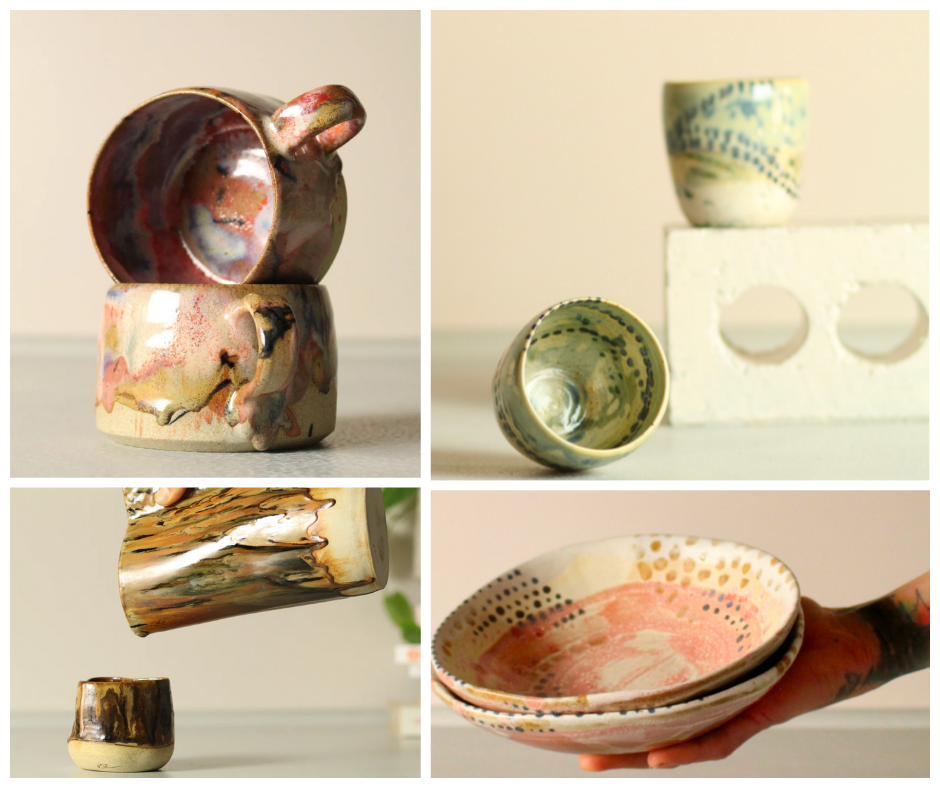
Apart from consistency, Aimie stresses the importance of setting realistic goals and expectations.
I've trained lots of new people in my time. With beginners, there’s often this fear and expectation that once you’ve done something once, you should be able to do it every time and that every time, you should be able to do it faster.
I've just started doing Instagram Reels, and I’ve been looking at what other people are making. Because I make stuff, I can conceptualise how long it’s taken, but most people have no idea. They know it’s sped up and only a little piece of the process, but subconsciously, it reinforces the idea that you’ll pick up a skill fast. You only see those 15 seconds, not the hundreds of hours it took to get there.
Balancing multiple businesses
Running one solo business is hard enough, let alone two. A lot of people ask how Aimie manages to fit everything into her day.
Her advice?
I like to focus on one thing at a time, one type of task each day. I just go day by day and block it out depending on which tasks need doing.
A typical week may look something like this:
Monday - Workshop day
Tuesday (morning) - See two clients who live near the workshop
Tuesday (afternoon) - Workshop
Wednesday - Ceramics or workshop
Thursday - Gym day
Friday - Ceramics, tapestry, or admin
I've had to say to myself, ‘Be realistic. You can’t do this all in a day.’ Running a business is like making a sculpture in that way: you have to work hard to get that good foundation and then you can step away, dip in and out.
It’s certainly not easy. You can fall into the trap where everything feels urgent, and you’re a bit like a headless chicken. You’re always just juggling things and prioritising.”
Aimie relies on her Remarkable to make sure she has everything documented.
I’m old school, and the computer doesn’t work for me. This way, I can jot down notes for my personal training clients, ceramics, metal art, and everything else I need to do without it getting too unorganised. I also have a whiteboard, so I can scribble it up there if something pops into my mind.
Last (but certainly not least), Aimie swears by maintaining a regular, early bedtime.
We get up between 4-4:30 am because I have clients at 7 am two days a week, and the only time my partner and I can train or walk the dog is in the morning. So we’re in bed by 8-9 pm every night.
Navigating the art market
Unlike Aimie’s metal art, which she does on a commission basis, selling ceramic art requires a more proactive approach.
While she’s still getting her head around the best way to sell her ceramic art online, she has seen some success with local markets.
My first one was incredible: Easter long weekend, 27 degrees outside and sunny. The next three, the weather got colder and I made half of what I made at that first market. I would have to say those last three were probably more realistic, but I sold every time.
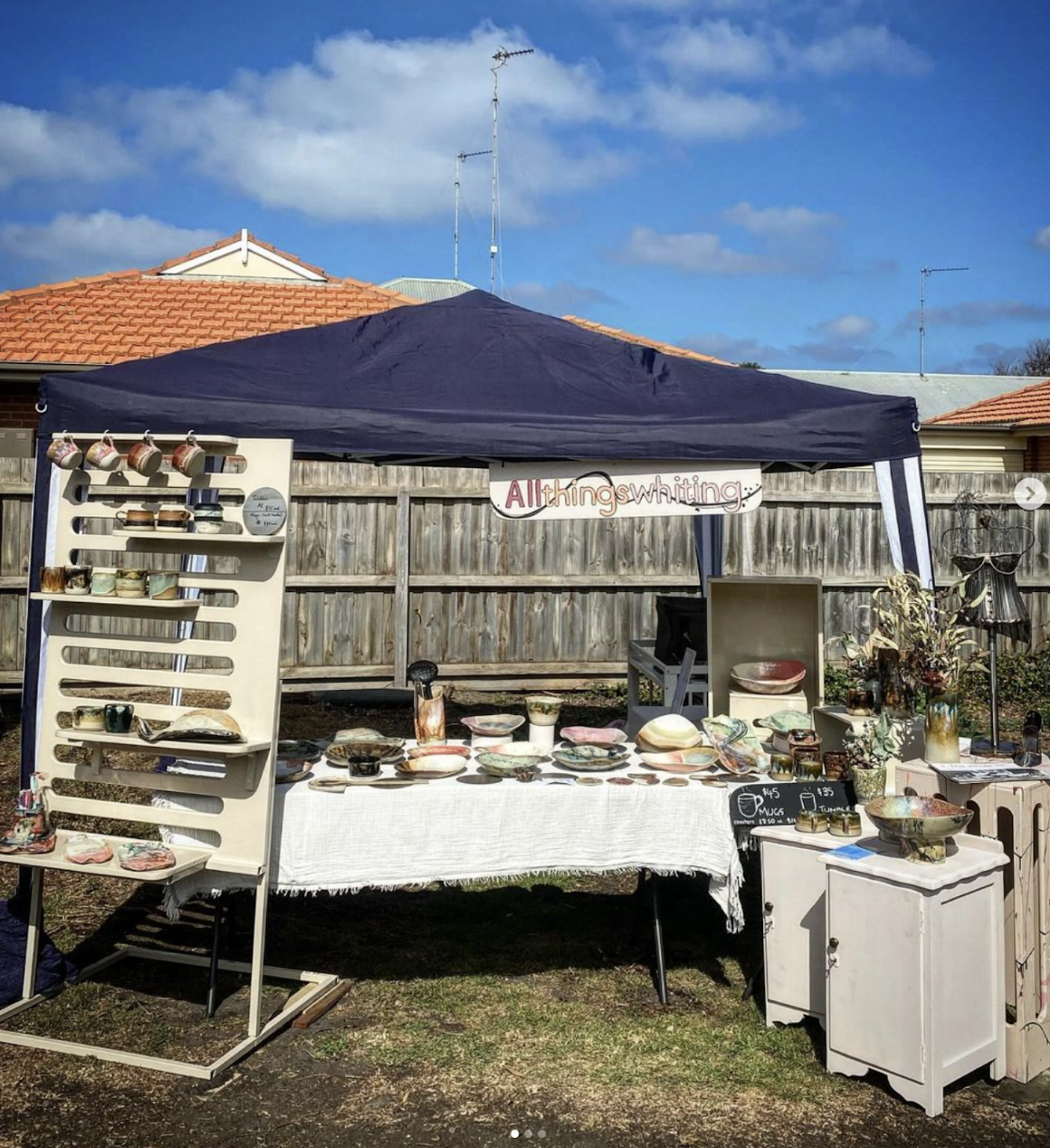
Markets are a great way to sell ceramics because you have people actually come and touch it. A lot of people are more tactile, and that’s something you can’t get with online shopping. Seeing people react to my stuff in real-time has also been nice.
Of course, there are downsides to selling at markets: long stretches of boredom and the chance that you may not sell as well as expected.
It's a gamble: you might have a great day or a terrible one. You can't take it too personally – and ultimately, it’s not about how good your art is. Life is expensive and you have to realise that what we’re selling is a luxury item for many people.
For anyone looking to start selling at markets, Aimie has a few suggestions:
Experiment with different ways of setting up your stall. You’ll learn something new every time. But overall, people don’t want to come inside your tent right away, so have stuff on the outside or make sure it’s easy to see what you’re selling without going in.
What’s next for Aimie?
On the heels of Aimie’s last big project, she already has another commission lined up:
I recently had a curator reach out after I posted a video of the eagle on Instagram. They wanted it for this exhibition up at Hanging Rock Winery. I told them it was a commission and couldn’t do it, but they really wanted one of my works. So I’m working on a couple of bigger sculptures for this exhibition, and that’s my main goal up to October.
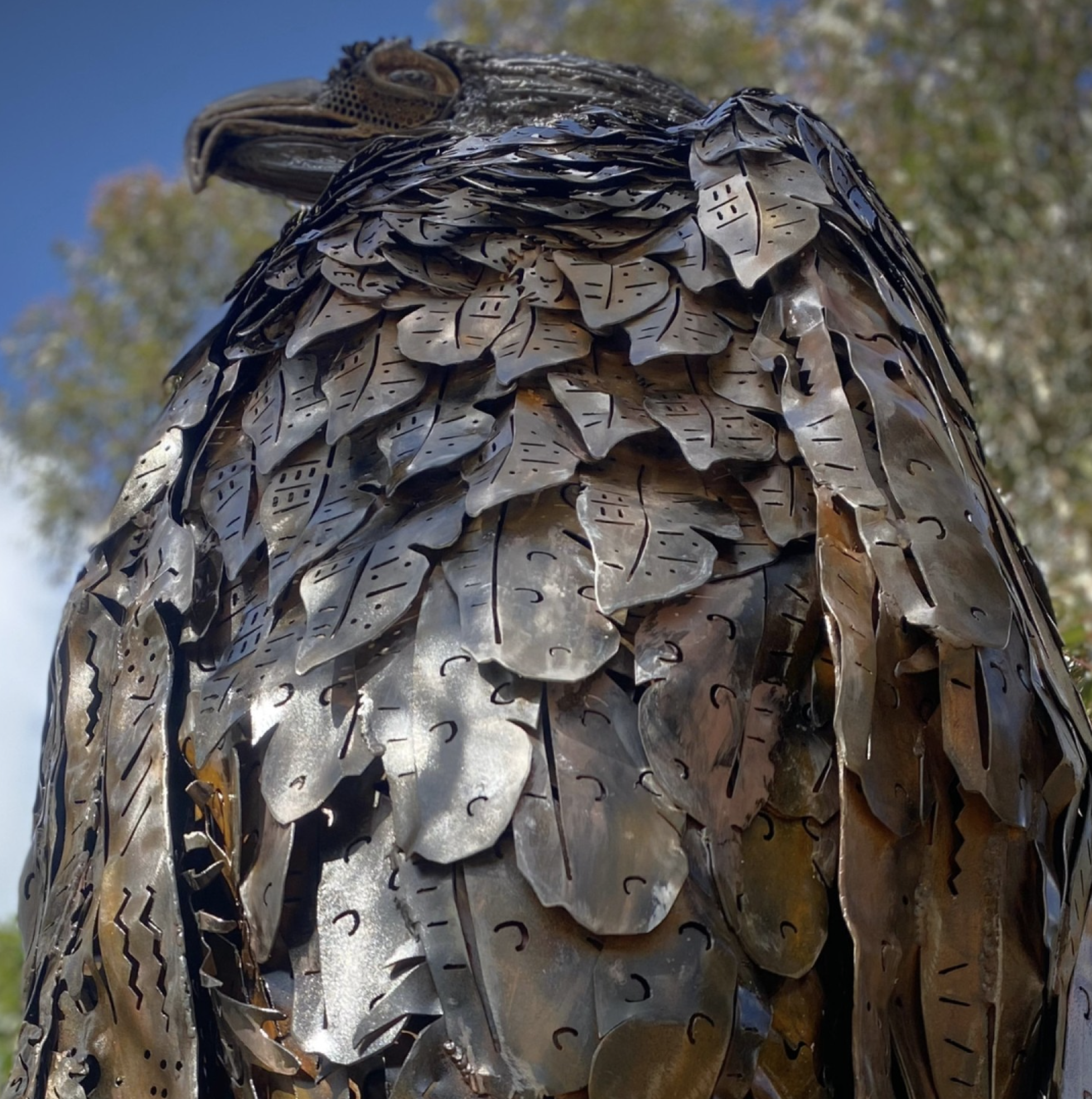
Aimie is also busy with a few other commissions for Christmas – although she has space in her calendar for a couple more.
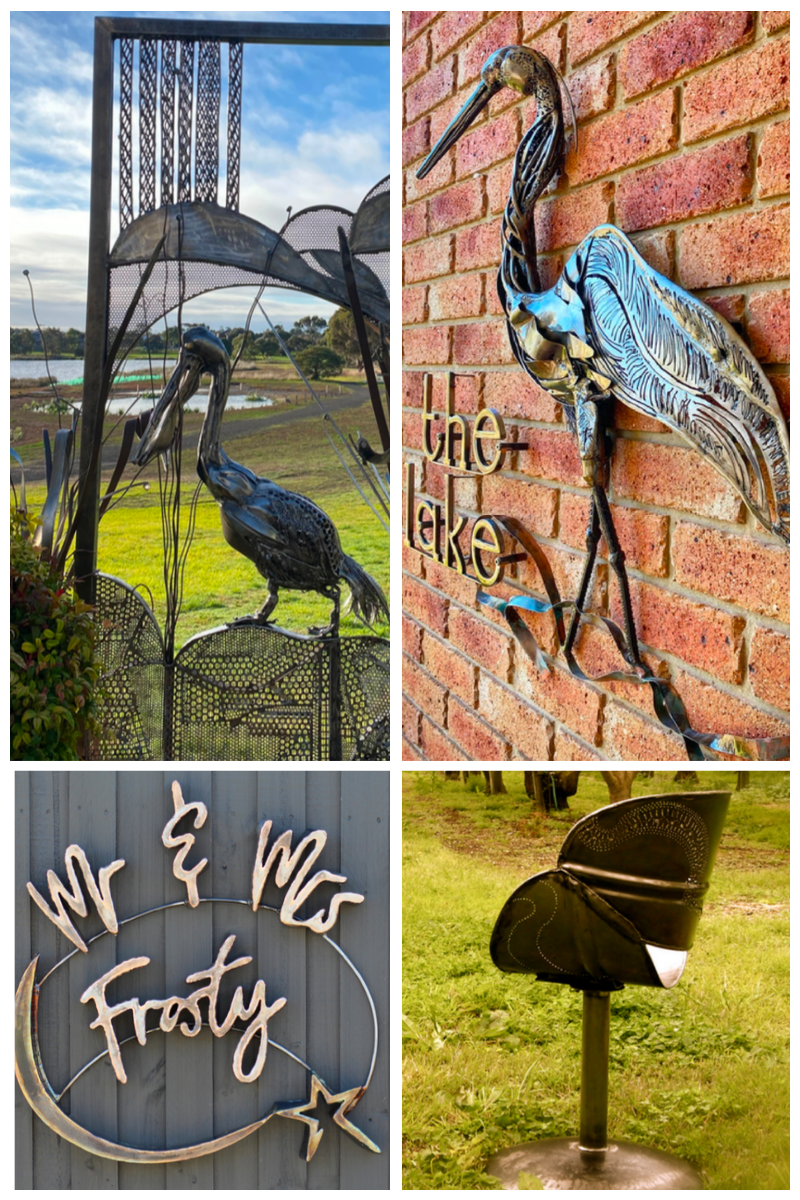
In terms of her ceramic work, Aimie hopes to throw some larger projects and further hone her skills.
I want to be able to take a week off the workshop work on my ceramics, then go back to the workshop while the ceramics dry and just have that ticking along in the background. Metalwork is my main focus and point of difference, but I want them to intertwine.
I want my ceramics to stay fun as well. I don’t want to be a production potter making hundreds of mugs – I think that’s how you lose your passion for it.
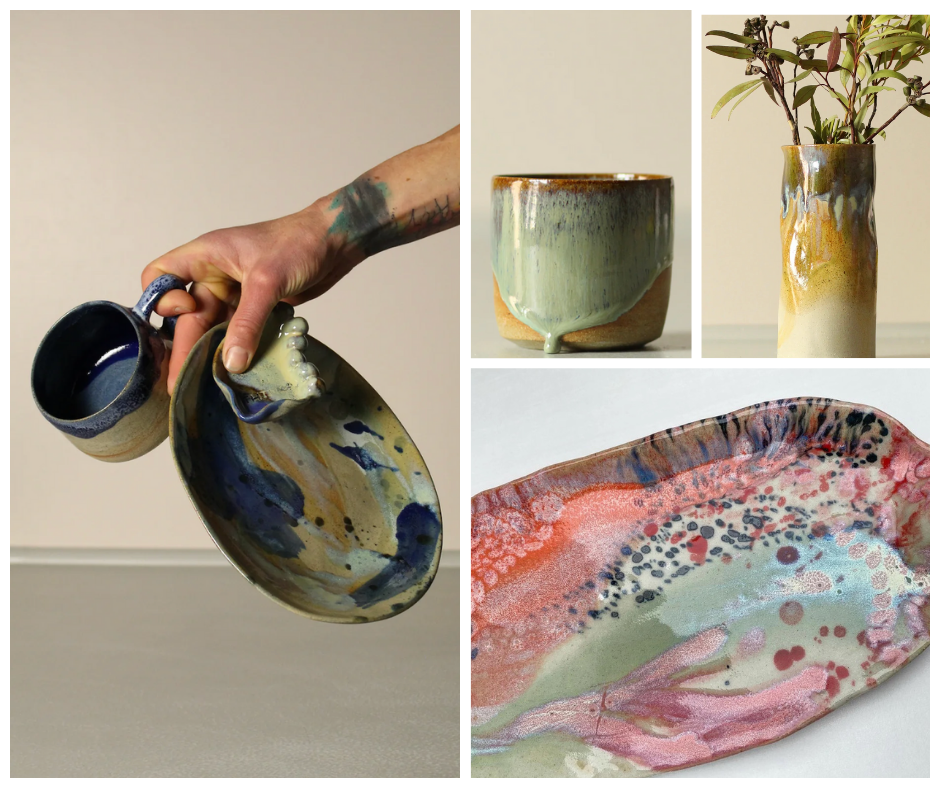
Aimie’s #1 piece of advice for business owners
To succeed in something – whether it’s building your business, learning a new skill, or anything else – you have to stick at it and not expect quick results.
“t’s like when you first start with a personal trainer – you won’t see a transformation after just one session. You have to put the work in, and you have to be consistent.
Using Rounded with multiple businesses
With four different income streams, how does Aimie keep her finances organised?
I have the one Rounded account and just categorise each type of work: my ceramics, training, metalwork, and tapestries. I use the same invoice for everything and can adapt my branding depending on who I’m sending it to.
Aimie uses Rounded to note which clients come from which business to keep things simple.
For example, I’ll have the abbreviation of PT at the start of the client’s name for my personal training clients or MW for my metal art commissions. Some of those people cross over, but using abbreviations helps me keep things straight.
When the money comes in, Aimie simply categorises the income based on the type of work. As for expenses, she says:
I keep on top of it as best I can and load receipts as I go. Then I'll just go through, check that everything's in the right category, and share access with my accountant. It’s easy.
See more of Aimie’s art
Check out Aimie’s existing work or request a commission using the links below:
Website: https://allthingswhiting.com/
Ceramic art for sale: https://allthingswhiting.com/collections
Instagram: https://www.instagram.com/allthingswhiting/
Contents
- Introduction
- Aimie’s journey as a solo business owner
- New passions (and income streams)
- On learning new skills as a business owner
- Balancing multiple businesses
- Navigating the art market
- What’s next for Aimie?
- Aimie’s #1 piece of advice for business owners
- Using Rounded with multiple businesses
- See more of Aimie’s art
Join newsletter
ABOUT ROUNDED
Invoicing and accounting software for sole traders. Get paid faster and relax at tax time.
